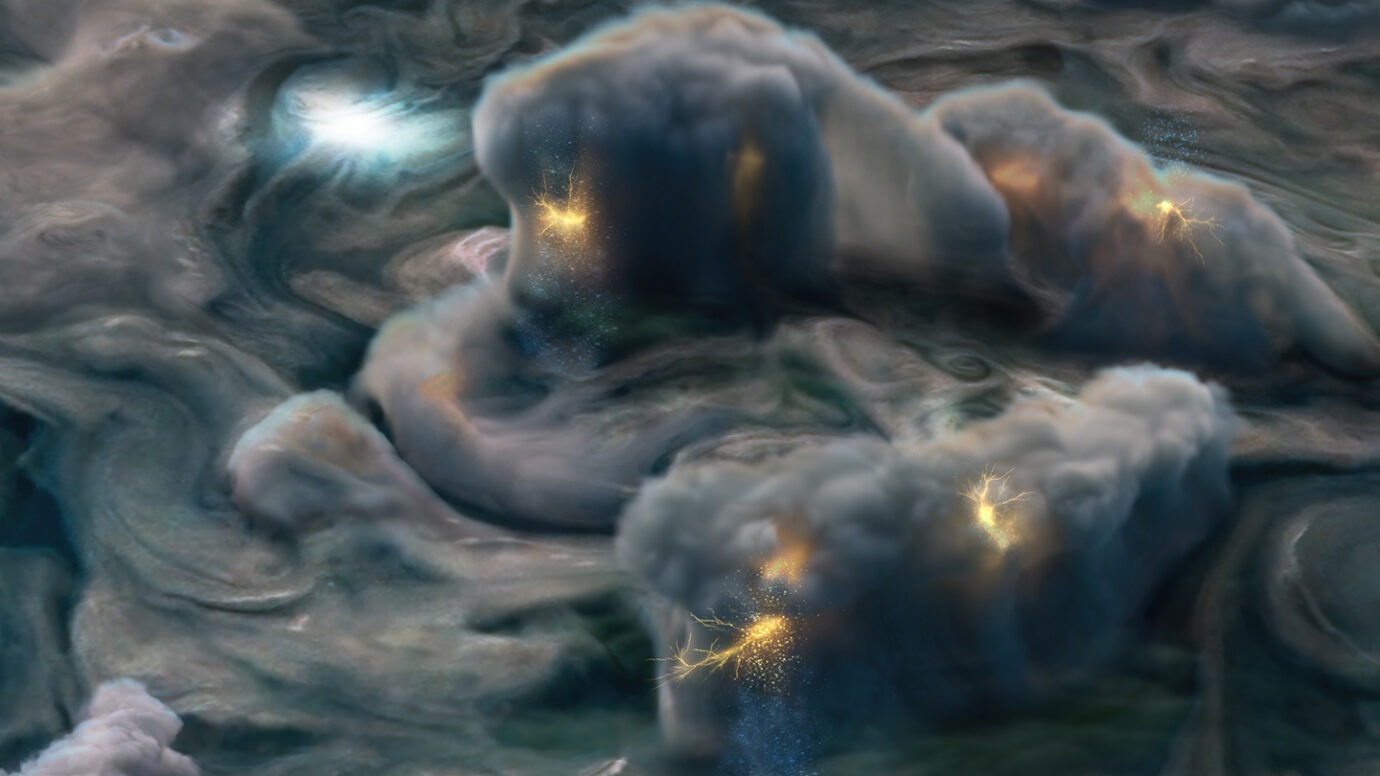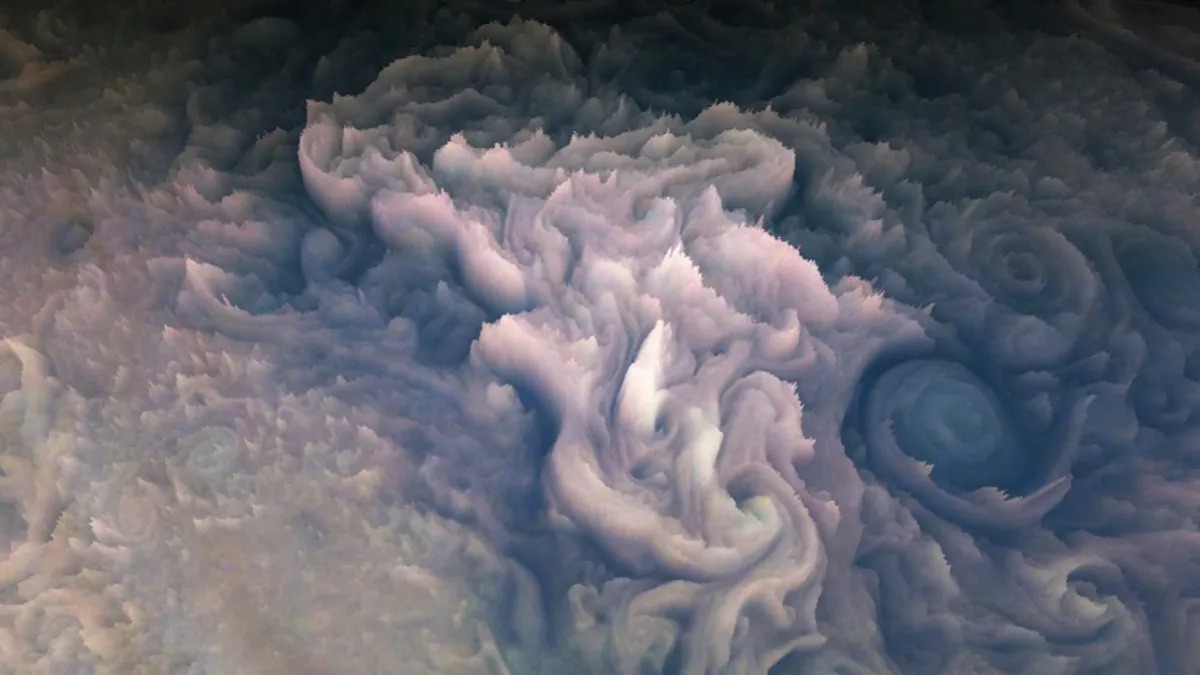Clouds on Jupiter have already been compared to Earth’s oceans. But recent studies have found another similarity with the Earth – the same lightning. As it turns out, lightning strikes on Jupiter look the same as on Earth, researchers report in the journal Nature Communications.

Jupiter’s lightning emits radio wave pulses, which are usually separated by about one millisecond. This is a sign that the lightning of the gas giant spreads in pulses, at a speed comparable to the speed of lightning that sweeps through the storm clouds of our planet. The similarity between these two electrical phenomena may have implications for the search for extraterrestrial life.
On Earth, lightning is formed when a turbulent wind in thunderclouds causes many ice crystals and water droplets to rub against each other, and then move to opposite sides of the cloud, gradually generating powerful static electric charges. When the charges become large enough to overcome the air’s ability to isolate them, the electrons are released in the form of lightning. From there, the escaping electrons will repeatedly ionize the air and burst into it, pushing the lightning forward at an average speed of hundreds of thousands of meters per second.
Scientists have suggested that super lightning, which is observed in the clouds of Jupiter, can also be formed as a result of collisions between ice crystals and water droplets. But no one knew before how alien lightning expanded and branched: does it happen the same way as on Earth, or do they have some other form?

For the new study, scientists from the Institute of Atmospheric Physics of the Czech Academy of Sciences used radio wave data collected over five years by NASA’s Juno spacecraft. After analyzing hundreds of thousands of images, the team has found that radio wave radiation from Jupiter lightning seems to pulsate at a speed comparable to the speed of terrestrial intra-cloud lightning. If lightning travels through Jupiter’s water clouds at the same speed as in terrestrial clouds, then Jupiter lightning can branch and spread in steps from hundreds to thousands of meters long.
Thus, the current behavior on Jupiter remains the same as on Earth. If this universality is real, it can have implications for the search for life elsewhere. Experiments showed that lightning strikes on Earth could melt some of the chemical ingredients needed to form the building blocks of life. If lightning discharges in a similar way in alien worlds, then it can produce similar ingredients for the formation of life there.
Earlier we reported interesting facts about Jupiter.
Follow us on Twitter to get the most interesting space news in time
https://twitter.com/ust_magazine

